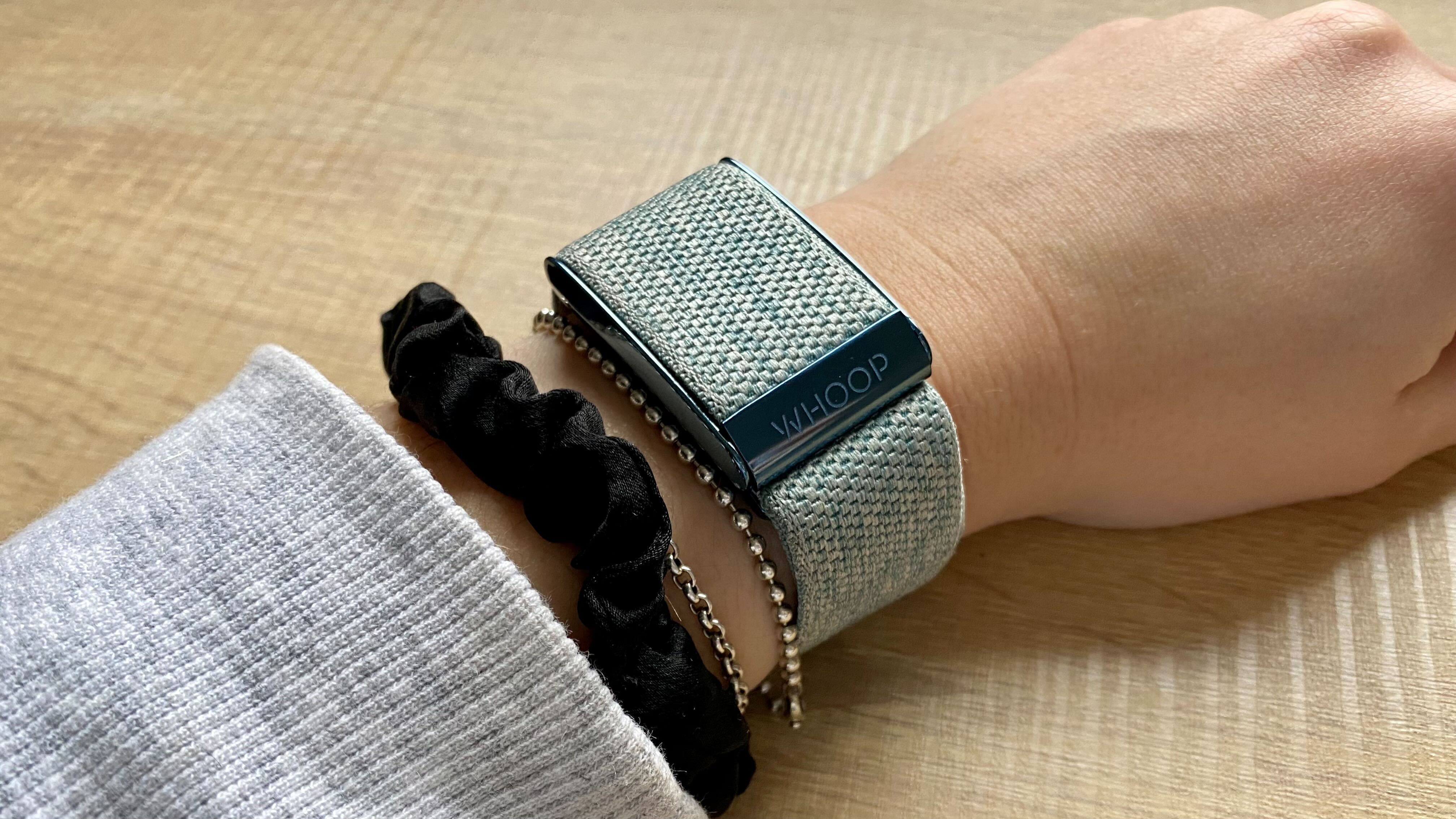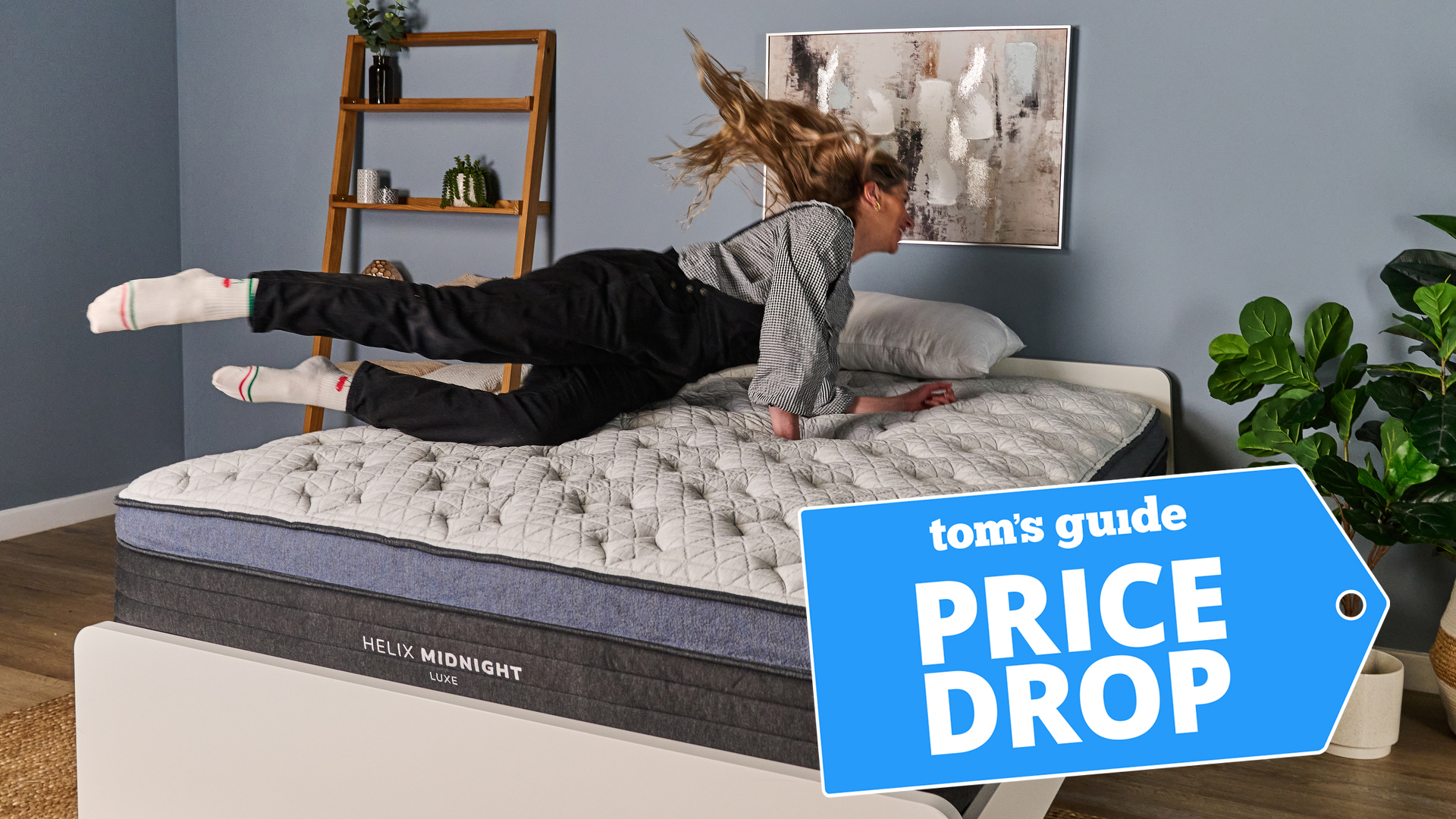Tom's Guide Verdict
The Whoop 4.0 is one of the best fitness trackers for those serious about their sport
Pros
- +
Sleep tracking is better than most other trackers on the market
- +
Heart rate, skin temperature, SpO2 sensors
- +
Smaller than the Whoop 3.0
- +
Interchangeable bands
- +
Compatible with Whoop Body
Cons
- -
It does require a monthly subscription
- -
No screen
- -
No GPS
Why you can trust Tom's Guide
Size: 1.5 inches x 1 inch x 0.5 inches
Waterproof: Up to 10 meters
Battery life: 4-5 days
Sensors: 5 LEDs (three green, one red, and one infrared) for heart rate, blood oxygen, skin temperature
It’s been a while since Whoop announced the Whoop 4.0 fitness tracker, which is 33% smaller and promises to have more accurate heart rate tracking than the Whoop 3.0.
What’s more, the Whoop 4.0 is compatible with the brand’s new line of apparel, “Whoop Body,” which allows Whoop wearers to wear their apparel in different spots on the body, rather than just the wrist. I’ve been testing the Whoop 4.0 tracker for the past month, and have found it to be a seriously helpful tool for health buffs.
Compared to nearly all of the best fitness trackers on the market, the Whoop 4.0 doesn’t have a screen, so you won’t be able to use it to say, look at your pace on a run, or check your heart rate without logging into the app.
But is it worth the monthly subscription fee, especially when a lot of other trackers also give you these metrics, as well as on-the-go data? Read my Whoop 4.0 review here to find out more.
- The best Fitbit: Choose the right tracker for you
- The best running shoes to buy to help reach your 2022 goals
- I hate to exercise, so I bought a Peloton — here’s what happened
Whoop 4.0 review: Price and availability
Like pretty much every tech item in 2021, the Whoop 4.0 experienced a lot of delays before it shipped.
The Whoop 4.0 band is free, but users will need to pay a Whoop subscription to use it. The subscription itself costs $30 per month, but there are 6-month ($288) and 12-month ($324) subscriptions that work out to be a little cheaper.
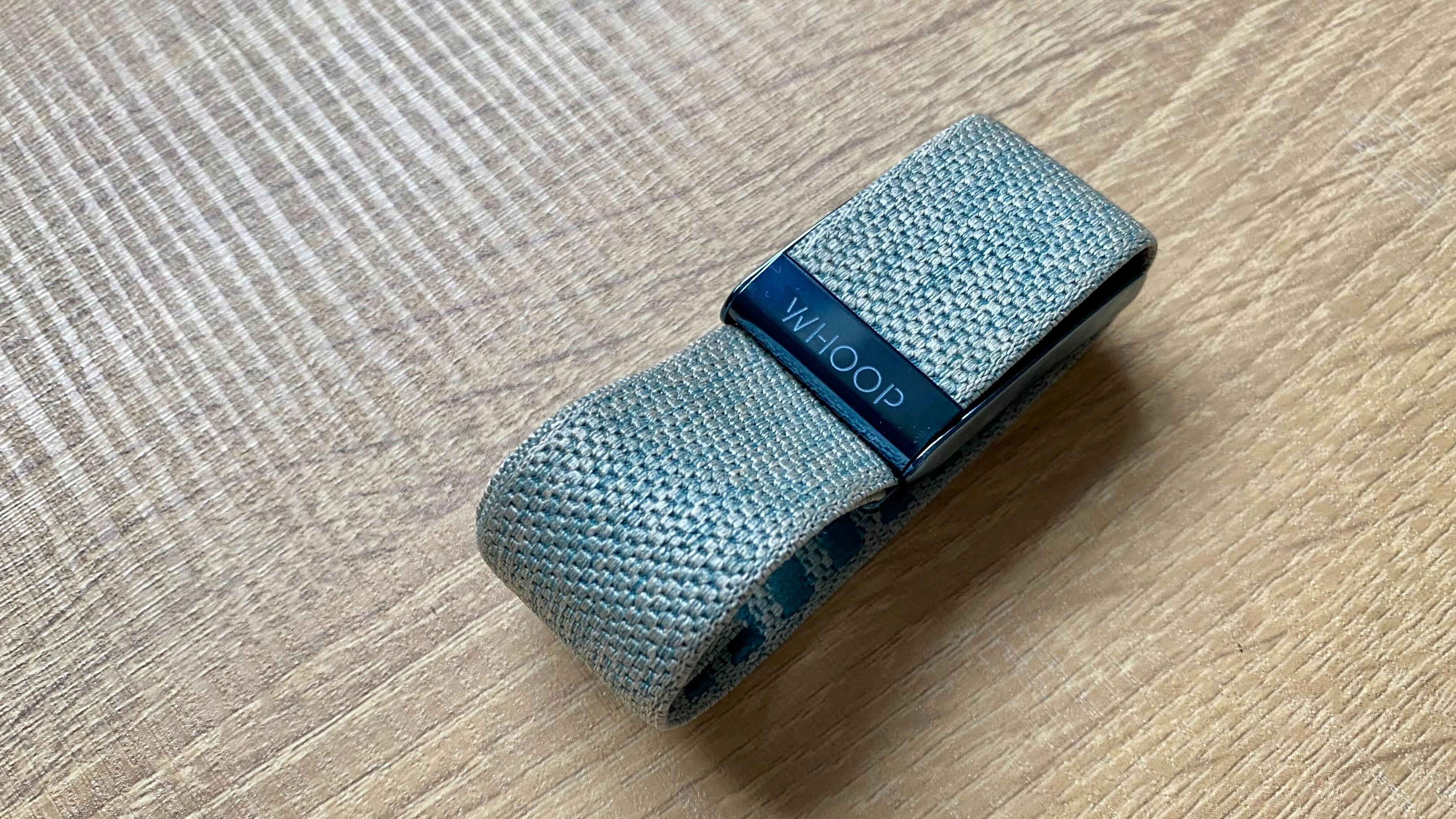
The accompanying Whoop Body apparel has little pockets, allowing you to slot the tracker into your garments rather than around your wrist. The range includes sports bras ($79), leggings ($109), compression tops ($64), as well as arm sleeves ($34), and boxer shorts ($69 for two pairs).
Get instant access to breaking news, the hottest reviews, great deals and helpful tips.
For complete clarity, I had some issues with the first review unit I received, which didn’t charge, and I know this is an issue a lot of users have experienced. The second unit worked perfectly, as is the one I have been using for this review.
Whoop 4.0 review: Design
The Whoop 4.0 is 30% smaller than the Whoop 3.0. I measured the device in the band on my wrist as 1.5 inches long, 1 inch wide, and about 0.5 inches deep. It also has a new design to make swapping straps and removing the unit itself a little easier — this is partly down to the introduction of Whoop Body products, which allow you to wear the tracker on different parts of the body using Whoop gym kit, but we’ll come to that later.
One stand-out feature of the Whoop 4.0 that I really wish brands like Apple would sit up and take note of, is the charger port. The band prides itself on 24/7 tracking, so the charger can be slipped over the tracker while it’s in the band on your wrist, for on-the-go charging. The charger does make the tracker a little bulkier and heavier on the wrist, but it’s not all that bad if you’re just sitting behind a desk at work, or on the commute, however, if you are using any of the Whoop Body accompanying kit, the tracker with the charger would be too bulky to fit in the garments. In my testing, it took about two hours for the tracker to fully charge, but the battery did last for around five days.

Compared to the Whoop 3.0, the charger on the 4.0 is also waterproof, meaning you could wear your Whoop and its charger in the shower or while swimming. That said, I soon realized that the fabric wristband didn’t dry all that fast, so I took it off when showering and swimming, because who wants a wet wrist for hours? (I also have super-sensitive skin, and found the wet band made me itch a lot).
There’s no display to speak of with the Whoop 4.0 — as mentioned above, you have to sync your Whoop and use the accompanying app to check all your data. You can double-tap on the tracker to see your battery bar on the side, but apart from that, think of this like a clever bracelet you ignore.

Whoop 4.0 review: Understanding the data
Normally, I’d go into different ways to get the most out of the tracker in this part of a review, but for new Whoop users, I feel like it’s important to take a second to explain what the hell you’re looking at when you open the app. I warn you now, Whoop can feel overwhelming for the first week or so, but it soon becomes second nature.
Like Whoop 3.0, Whoop 4.0 works off two metrics — Strain and Recovery. They are the first things you’ll see when you log into your app. Your Recovery score is based on how well you’ve slept. Your Strain score is based on how much you’ve worked out that day. Strain is based on your heart rate, so if you’ve gone on a gentle three-hour bike ride, but kept your heart rate pretty low, your strain score will be lower than if you’ve gone on a 30-minute run. Your strain starts at 0.0 each morning, and the max strain score Whoop is said to give is 21.

Clicking on the Strain tab next to the overview allows you to see your daily strain again, and how ‘primed’ you are to take on strain (or hard activity) that day. As you scroll down, you’ll see your average day strain, heart rate, and calories burned.
The other important metric is recovery, which accounts for how long you’ve slept, your respiration rate, your resting heart rate, and your heart rate variability. These don’t hold the same weight in Whoop’s recovery algorithm, so for example, if you have a long but unrestful night’s sleep, your score might be lower than when you spend less time in bed, but sleep well. The algorithm determines how recovered from yesterday’s strain. The higher your recovery score, the more ready you are to take on a difficult workout.

Whoop 4.0 review: Sleep tracking
I wore the Whoop 4.0, comfortably around my wrist for a few weeks as I sleep (or don’t sleep, according to Whoop). The Whoop automatically detects sleep, and during my testing, I found it was pretty accurate in determining when I’d actually fallen asleep — I normally get into bed at around 10 pm, but scroll on my phone or look at photos of my puppy for about 30 minutes before actually falling asleep. I was also wearing my Apple Watch 6 for the duration of my testing and found the Whoop’s sleep tracking to be far more accurate than the Apple Watch, which would often detect sleep if I were sitting watching TV.
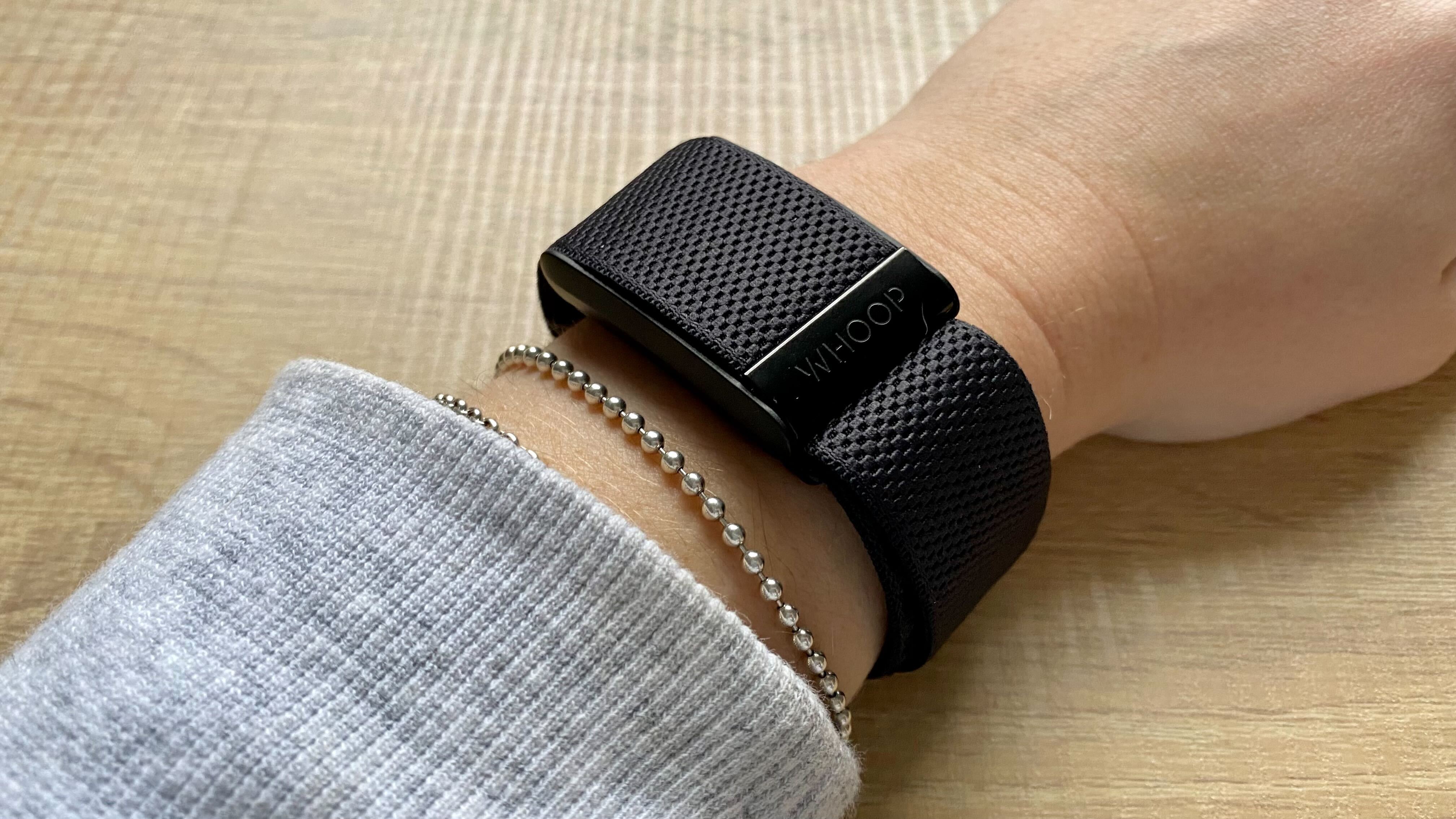
When you get out of bed in the morning, you get a notification on your phone alerting you that Whoop has calibrated your sleep. This normally happened after I’d been moving around for 15-20 minutes, so if, unlike me, you don’t have to jump out of bed and take the dog for a walk, you might find this sleep score takes a little longer to come through. When you log into the app, Whoop will ask you to fill in your ‘journal,’ which asks questions about your caffeine intake, or sleep habits. These are completely customizable in the app and are designed to help you analyze how behaviors and lifestyle choices affect your recovery. I toggled most of them off, as I didn’t want to see hard evidence that I should stop drinking coffee and looking at my phone before bed, but still got automated questions about Covid-19 symptoms each morning.
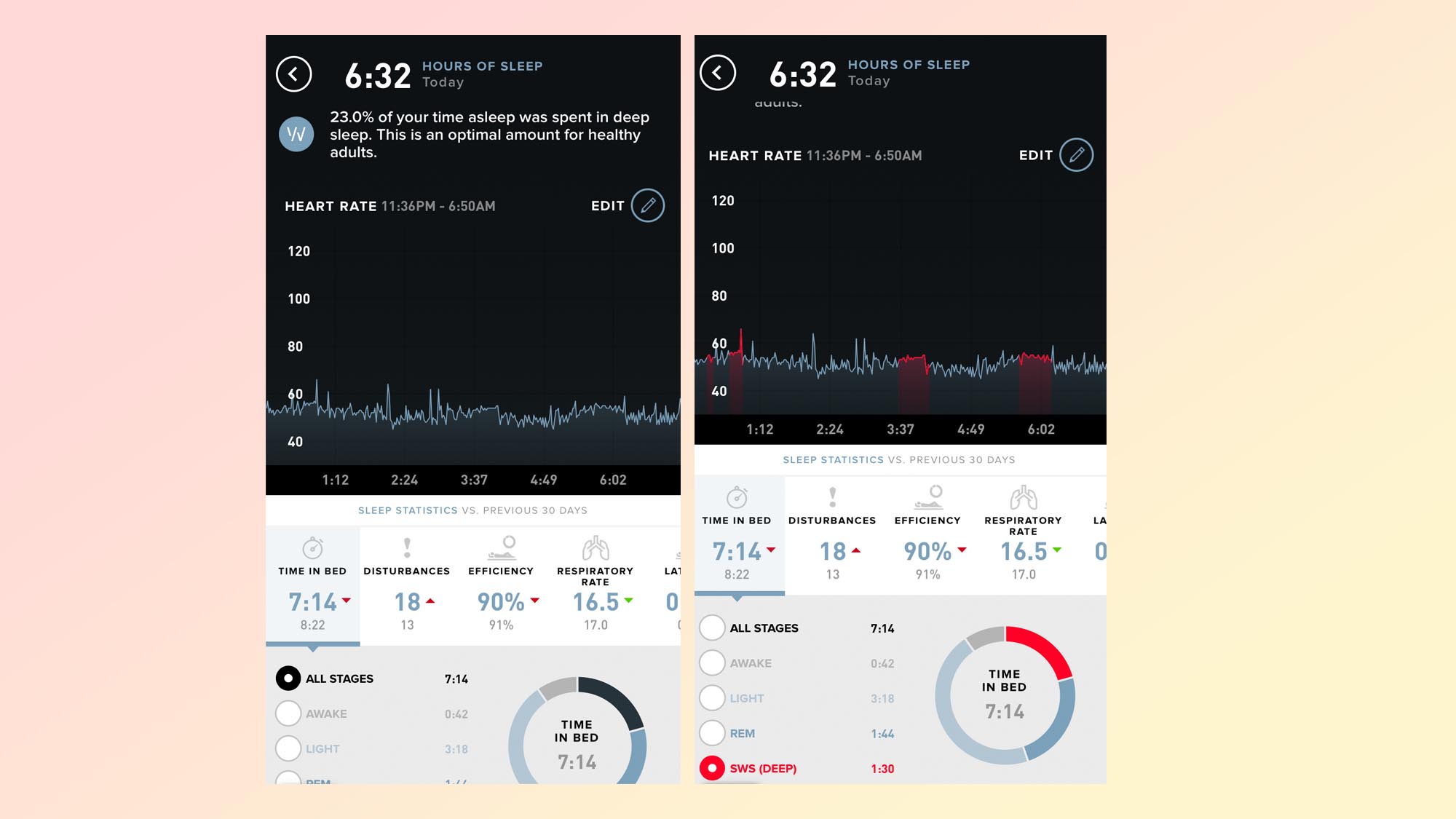
Under the sleep section of the app, you can see in-depth information about your night’s sleep, including time in bed, hours asleep, sleep need, sleep performance, disturbances, sleep efficiency, and stages of sleep. The app also suggests when you should go to bed that evening to get enough sleep, which is what Whoop calls the Sleep Coach.
I’m a pretty good sleeper — I don’t struggle to fall asleep, and if I didn’t have a puppy that wakes me up the second the clock turns 7 a.m. (seriously, is he programmed by Whoop too?), I reckon I’d get a good nine hours most nights. That said, during my testing, I never managed to get my sleep performance score above 88%. Whoop’s algorithm seems to think everyone needs 9-10 hours of sleep per night, which, unless you have no social life, kids, or a 9-5 job, seems a lot. You can boost tomorrow’s sleep score by taking a nap, but again, unless you’re an athlete, this probably isn’t something you’ll have time to do.
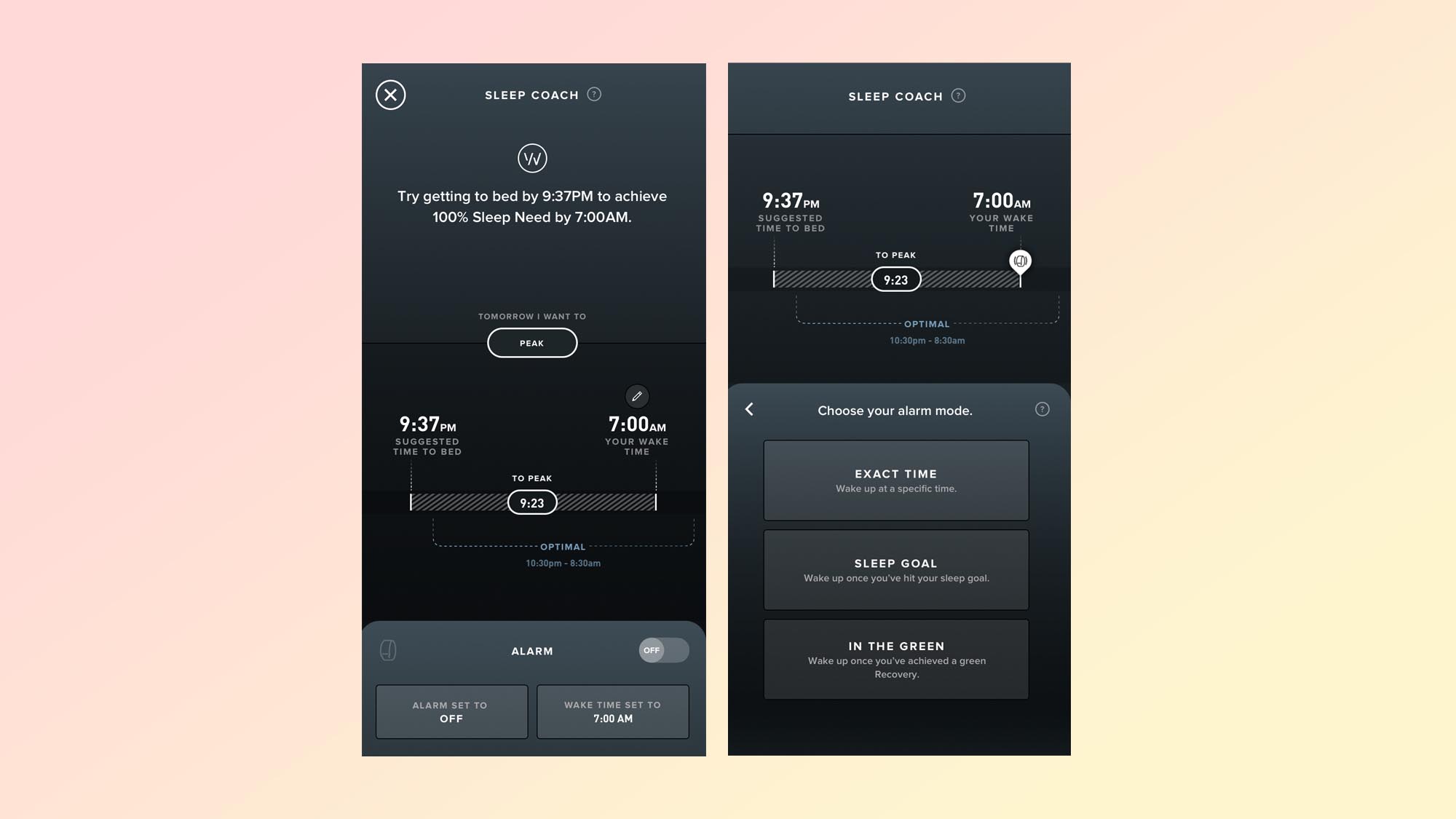
With the Whoop 4.0, Whoop also added haptic alerts, which can wake you up with vibrations on the wrist. You can set an alarm for an exact time, which I did, and found to be a much more pleasant way to wake up than my iPhone alarm. Alternatively, you can set an alarm for your tracker to wake you up once you’ve reached a sleep goal — 100% of your sleep need, 85%, or 70%, or once your tracker determines you’ve reached a green Recovery score. Personally, the thought of my tracker robbing me of sleep is a waking nightmare, but the haptic alarm is a handy feature.
Whoop 4.0 review: Heart rate tracking
The Whoop 4.0 sensor contains five LEDs (three green, one red, and one infrared), four photodiodes, and advanced algorithms for more accurate heart rate tracking. A huge complaint many people had with Whoop 3.0 was that the heart rate tracking was inaccurate. I found, when comparing my running heart rate data from my Garmin Fenix 6 to the Whoop, the heart rate graphs looked very similar.
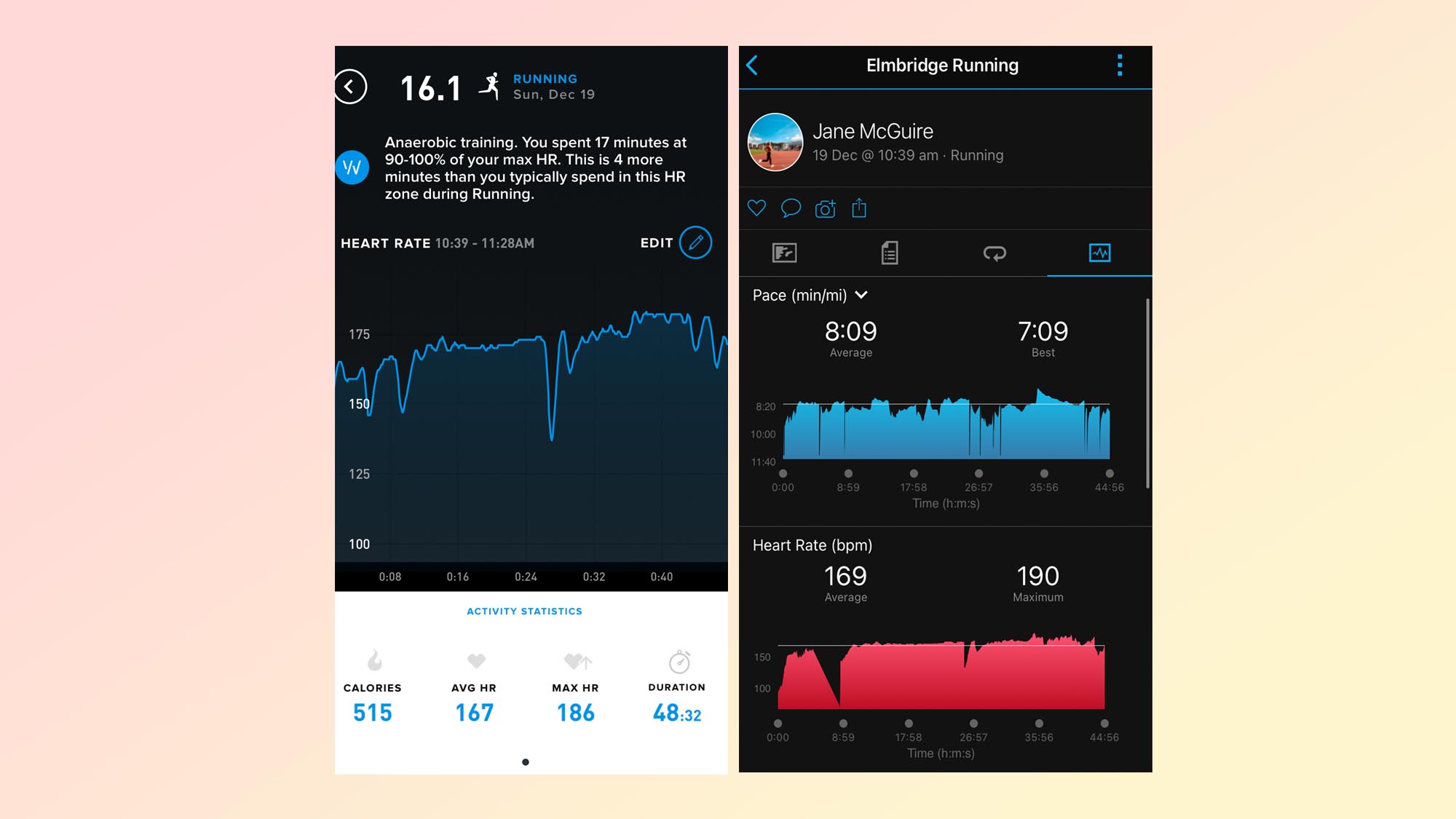
Unlike my Garmin, however, you cannot connect the Whoop to any third-party chest heart rate straps, which are usually considered to be more accurate than optical sensors. That said, the introduction of Whoop Body is that with a Whoop Body bra, you can wear the sensor in the chest band of your bra. I’m yet to try the Whoop tracker with any of the Whoop Body apparel but will update this review once I’ve done so.
Whoop 4.0 review: Workout tracking
Like with sleep tracking, the Whoop uses automatic workout detection to track your workouts. Whoop will automatically create a workout when it thinks you are exercising, and tag it to what it thinks your doing, such as a run, or a bike ride. You can go in and edit the workout once you’ve finished, and retag it should you need to. You can’t delete workouts, but it seemed to pretty accurately pick up when I was running, cycling, or doing a HIIT session.
When you click on the activity in the Whoop app after your workout, you’ll be able to see metrics on your heart rate zones and calories burned. Whoop will also give you information about your workout, such as how it compares to similar activities. Whoop doesn’t give you specific workout information, like your average pace if you’re running, or your average speed on the bike, so you’ll probably want to wear another fitness tracker on the other wrist if this data is important to you.
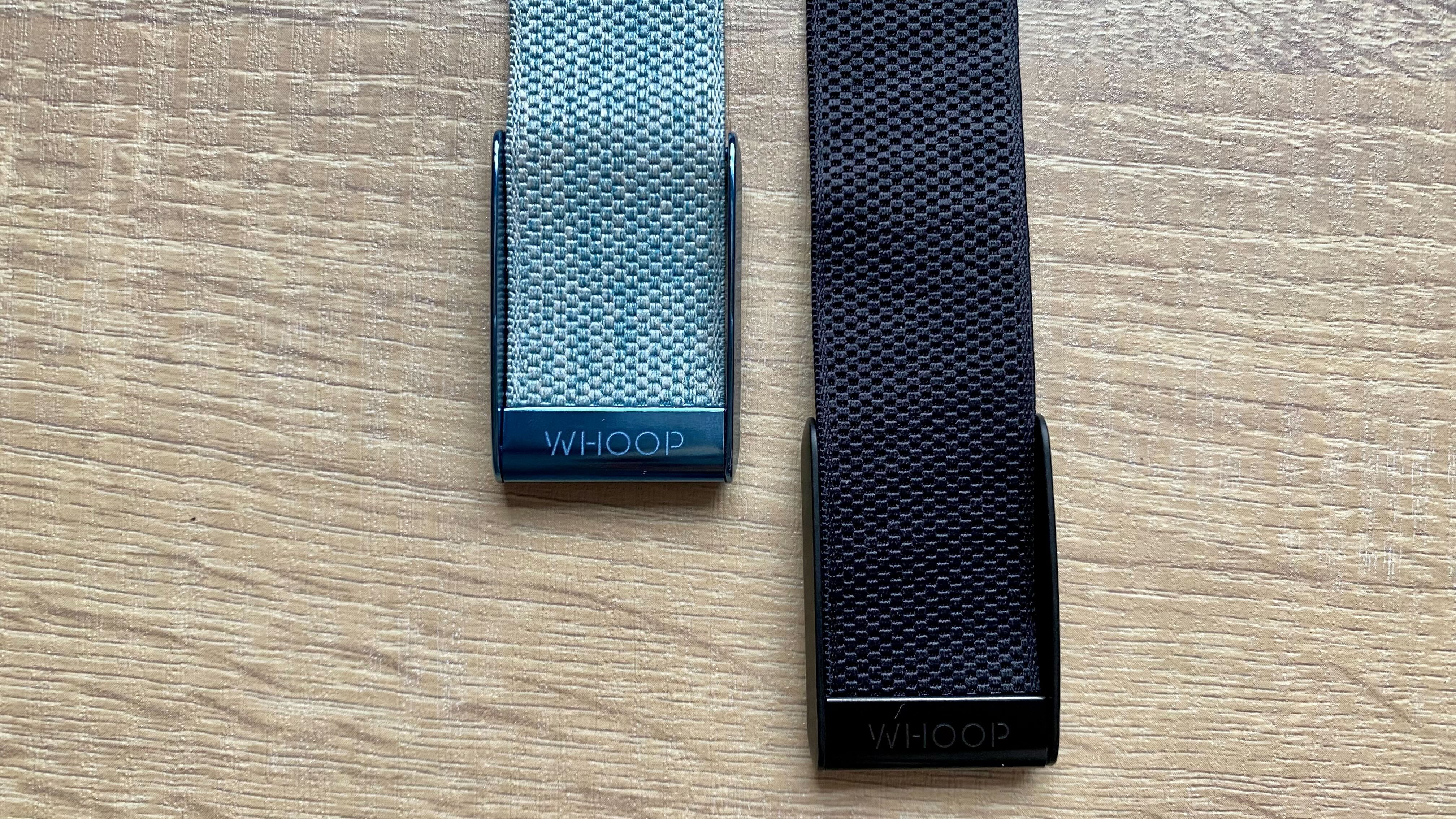
I know what you’re thinking — wait, I have to wear two watches? This is something I’ve struggled to get my head around with the Whoop. As there’s no screen, you can’t use the Whoop for live training feedback, but this isn’t the point of the tracker. It’s all about your strain and your recovery, which is measured by your heart rate, so I find it easier to think of the Whoop strap as a fancy heart rate monitor rather than a traditional fitness tracker.
One workaround, however, is to track the activity or workout in the app on your phone, under the ‘Strain Coach’ setting. Once you’ve toggled GPS, and Track Route on, you can head out for your run or ride with your phone and your Whoop, and see data such as average pace, and a map of where you’ve traveled, when you get back. There are a huge number of different sports to choose from using the drop-down menu, and the activity map can then be synced with third-party apps like Strava.
Another feature I found handy was using my Whoop 4.0 as a heart rate monitor when using my Peloton Tread. Toggling ‘broadcast heart rate’ in the device settings allows you to use the Whoop as you would a heart rate monitor.
Whoop 4.0 review: Verdict
The Whoop 4.0 is undoubtedly a brilliant health tracker for anyone looking for enhanced health insights. There’s a clear reason why a lot of the worlds’ top athletes have been spotted with one on their wrist or around their bicep — for a coach, this data would be invaluable. I haven’t even touched on insights such as skin temperature, which can be used as a metric to see when your core body temperature is rising — this could be a sign you’re getting ill, as well as giving more detailed sleep data. This tracker is industry-leading in the tracking and data it provides.
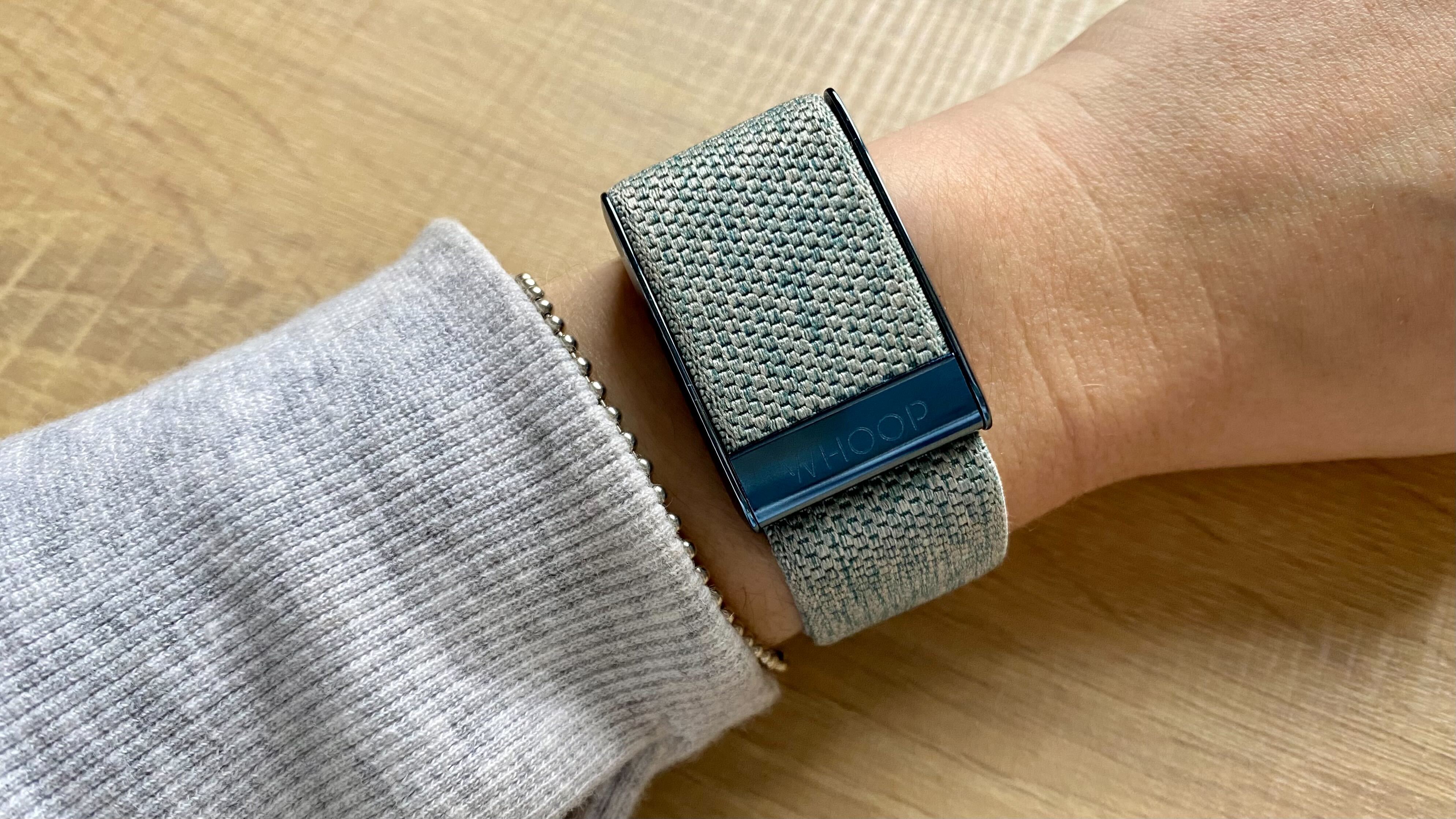
But, is it worth it? At $30 a month, the Whoop subscription isn’t cheap, and unless you’re really using the data, I’d argue you’d be better off investing in one of the best fitness trackers, or best running watches that give you recovery data, as well as the ability to use the watch as, well, a watch. That said, I wish I’d had the Whoop 4.0 on my wrist for my last marathon training schedule, and I’ve found that on days where I wake up feeling tired, by my Whoop tells me my body strain score is low, it does give me that kick to get my shoes on and do the speed session my brain is telling me to skip.
Like all items of fitness tech, the Whoop 4.0 is only worth it if you use it, but if you’re looking to enhance your training with in-depth data, or learn to work out more intuitively after a string of overtraining injuries, it’s one of the most advanced trackers on the market.

Jane McGuire is Tom's Guide's Fitness editor, which means she looks after everything fitness related - from running gear to yoga mats. An avid runner, Jane has tested and reviewed fitness products for the past five years, so knows what to look for when finding a good running watch or a pair of shorts with pockets big enough for your smartphone. When she's not pounding the pavements, you'll find Jane striding round the Surrey Hills, taking far too many photos of her puppy.
